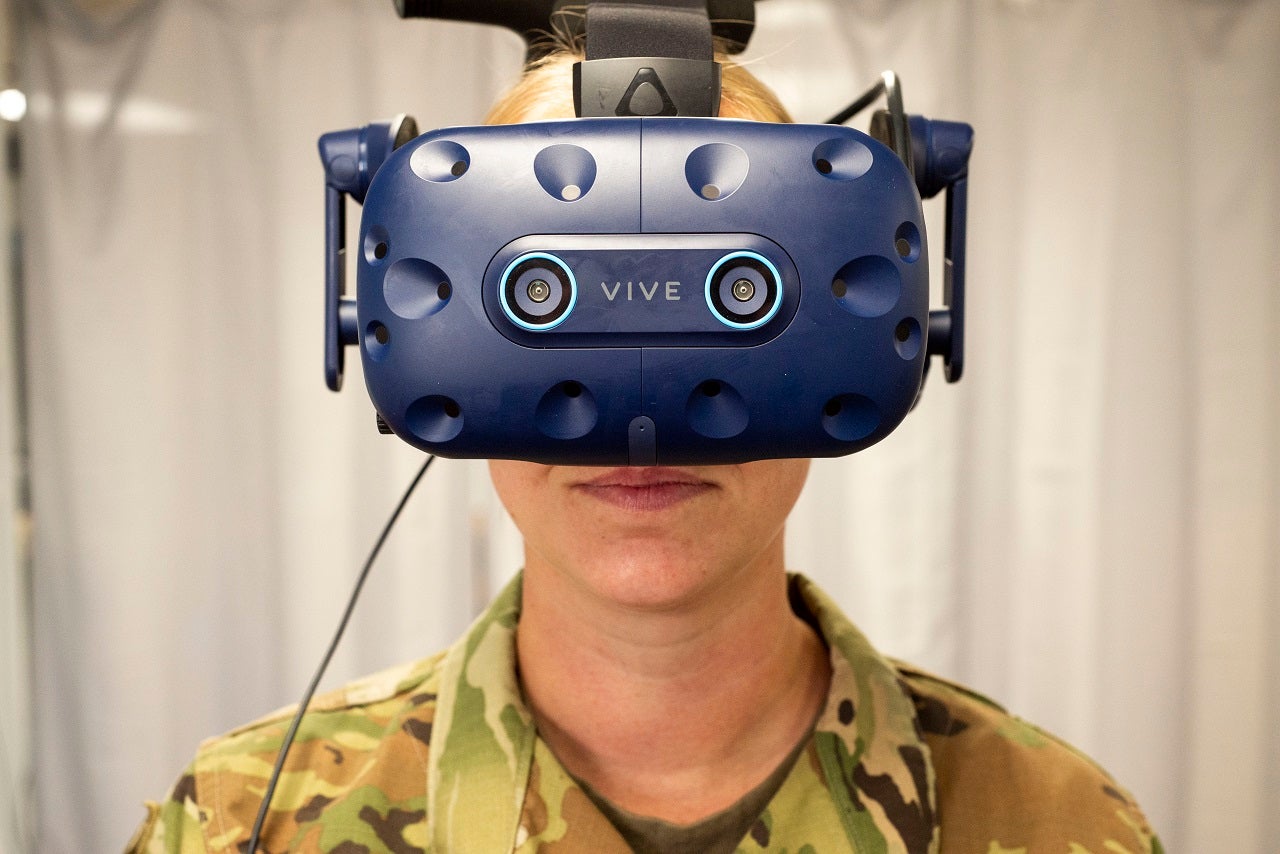
The US Air Force (USAF) Air Education and Training Command (AETC) Training Command Training Transformation (T3) development team has recreated the Crew Chief Fundamentals Course as a virtual reality (VR) experience in partnership with officials at Sheppard Air Force Base. In the summer of 2020, 29 students trialled the programme by carrying out various tasks, including maintaining simulated aircraft.
The initiative goes back to 2017 with the Pilot Training Next programme, Detachment 23 commander Major Jesse Johnson tells Airforce Technology.
“The organisation was facing a pilot shortage and was looking at the options how to produce better quality pilots faster in anecdotal terms,” he says. “After that, commanders of the time recognised that if we’re going to create the pipeline in pilots, then we should create maintainers as well. So, we started developing our product and methodology.”
Johnson, who is second-generation USAF, adds: “The team serves as a conduit for industry partners to provide solutions to modernising air force classrooms without impacting current student throughput.”
The Texas-based AETC was established in 1942, making it the oldest major command in the USAF that recruits, trains and educates aviators.
The T3 programme is a fundamental shift in how information is being delivered and students are educated. As opposed to learning from PowerPoints in a modular way, students can learn at their own pace, and instructors can focus on answering questions and cater for students’ needs instead of conducting classes. The new method is competency-based and has a demonstration focus.

US Tariffs are shifting - will you react or anticipate?
Don’t let policy changes catch you off guard. Stay proactive with real-time data and expert analysis.
By GlobalDataJohnson says they are no longer making students fit the content, they are changing the content to match their needs.
Fundamentals of aircraft maintenance instructor supervisor and 362nd Training Squadron Tech Sergeant Kyle Ingram says: “As of now, we are putting the students through the traditional course where they are in a standard classroom, and we take those students. In the time that they are waiting to go to their next duty stations where they do their follow-on training from there, we take those students and we put them into a VR programme and allow them to retake the course essentially in the new VR programme. And we always sit them down, let them do their own course in their own time.”
From T3’s perspective, a quality aviator is an individual that can do every part of their job with minimal supervision to the highest efficiency and proficiency, and they are confident their training method is capable of achieving that.
The results students produced coming out of the VR course were encouraging. The end-of-course assessment showed scores were comparable to those students who only participated in the traditional methods.
Ingram says: “Every single student has always come out of there saying that it’s [the VR method] way more engaging and more fun for them. It comes more naturally for them because, in this day and age, the students are being brought up into school with all of this technology.”
Instructors have also praised T3’s quality and personalised, aviator-centric approach. Students have also finished the 27-day course on an average of 12.5 days.

Johnson says: “We do produce students faster, but that was never the intention. It was always about better quality airmen coming on the backside of it. And if we happen to get a time savings as a benefit, then that’s great news for the taxpayer”.
Hands-on training creates a burden on the wing by forcing mission series aircraft that are committed to real-world roles to be pulled from their missions. Therefore, capitalising on the opportunities that VR gives to practice seems invaluable.
However, there are questions in the military whether VR training provides the same quality preparation as hands-on training. The main concern is the low-fidelity capability of virtual experiences that do not necessarily train muscle memory adequately.
Johnson argues: “When we do our tire change setup, the haptics of a 300-pound tyre aren’t there in VR, but certainly the steps and processes that we need the airman to know, are part of that. I’ve been in a VR environment myself where it feels like I am actually on the aircraft, it looks so realistic. So, I think we are overcoming those limitations.”
He adds that an aviator was able to identify missing components from an aircraft without ever seen an aircraft in real life, solely relying on her VR training.
Fundamentally, humans learn through failure, so the project developers have implemented a so-called consequential learning procedure to the system. That is to reward or penalise students according to their actions. Designers of T3, however, recognise the essentiality of hands-on training, and they are not planning to replace that with VR.
“We don’t pretend that the old system is bad, we just say it won’t function in the future,” says Johnson.
T3 plans to add an additional component to the programme called non-player characters. This will allow students to interact, ask questions and receive instruction from an artificial intelligence (AI) powered aviator within the simulation. AI could also be used to use the information collected to whether a student has a competency gap, or they are falling short on a particular skill set. The system then can adjust and tailor the course to help trainees overcome their individual struggles.



